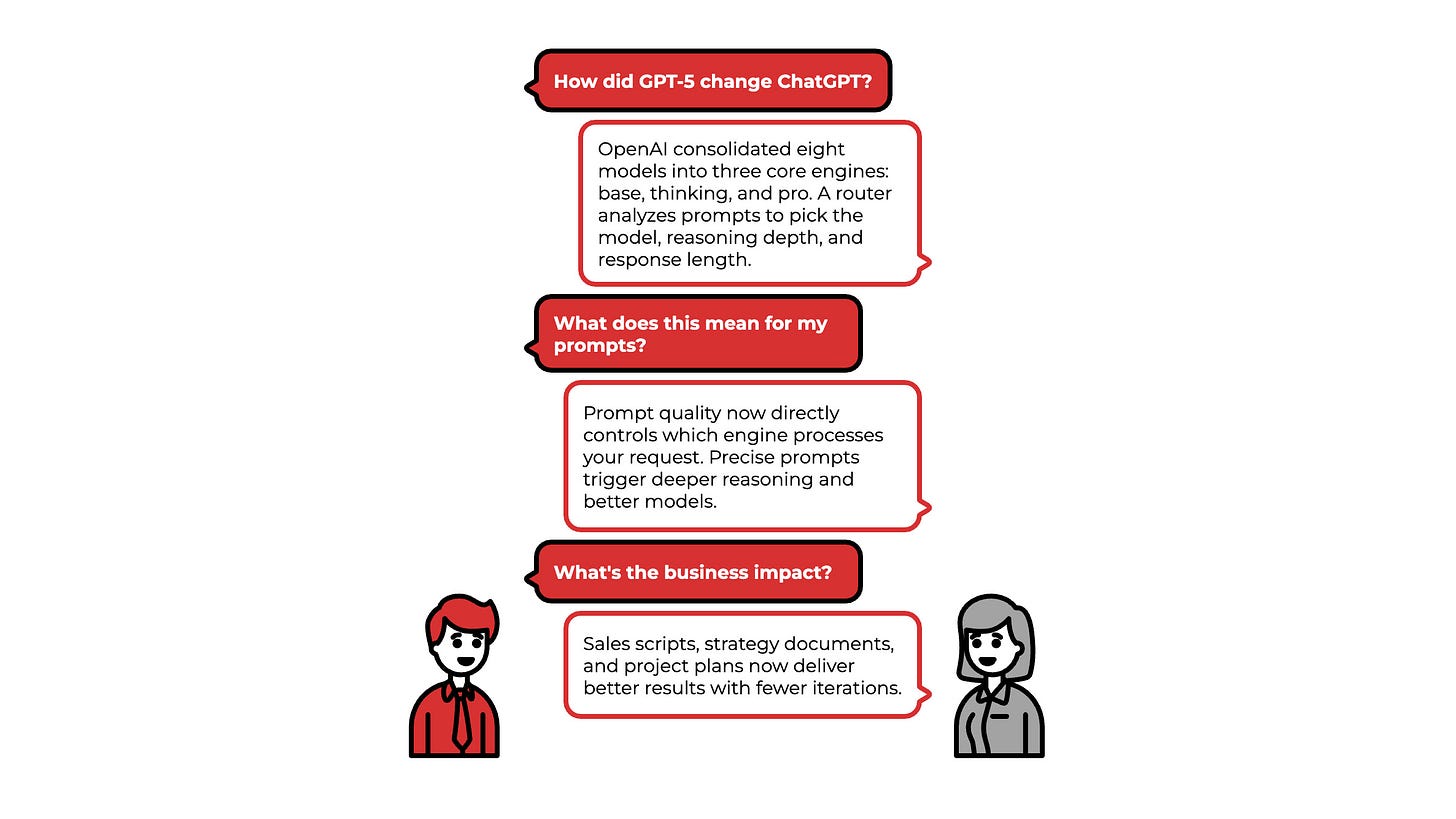Why Your Old ChaGPT-5 Prompts Are Failing You
Seven GPT-5 prompting techniques that turn mediocre AI outputs into business-grade deliverables. Master the router system advantage.
Hey Adopter,
Your team thinks they know how to use ChatGPT. They fire off casual requests and wonder why the outputs feel generic. Meanwhile, competitors are pulling 10x better results from the exact same tool.
Here's what you'll master today: Seven GPT-5 prompting techniques that transform mediocre AI outputs into business-grade deliverables, including the multiple-tool orchestration method that most professionals don't know exists.
Usually, on Mondays, we go straight into specific prompts and workflows. However, today I'm going meta because too much confusion still exists about GPT-5 - what works, why it works, and why your old approaches don't work anymore.
The gap between basic users and prompt experts just exploded. Companies that adapt win. Those who don't fall behind fast.
The consolidation revolution nobody talks about
GPT-5 fundamentally changed how ChatGPT works. OpenAI took eight distinct models (O3, O4, O4 mini, O4 mini high, and others) and consolidated them into three core engines: base, thinking, and pro. Every prompt you send now gets analyzed by a router that picks which model to use, sets the reasoning depth (minimal to high), and determines response length.
This isn't just a technical upgrade. Your prompt quality now directly controls which engine processes your request. Vague inputs get routed to basic processing. Precise prompts trigger deeper reasoning and better models.
The business impact hits immediately. Sales scripts that took three rounds of back-and-forth now nail the tone in one shot. Strategy documents that felt generic suddenly deliver sharp insights. Project plans that missed key risks now catch blind spots automatically.
Seven techniques that unlock GPT-5's full power
Technique 1: Strategic reasoning control
You must tell GPT-5 how hard to think on every complex prompt. Add "think harder" or "ultra think" for challenging tasks. For simple requests, specify "think lightly" to avoid over-processing.
Business application: Use "think harder" when analyzing competitive landscapes for board presentations. Use "think lightly" for routine email drafts or basic formatting tasks.




